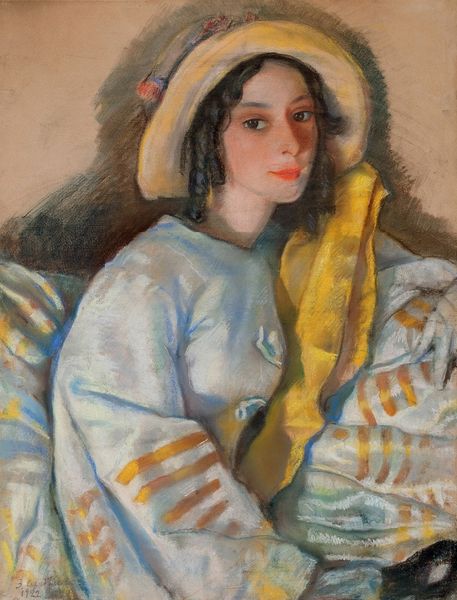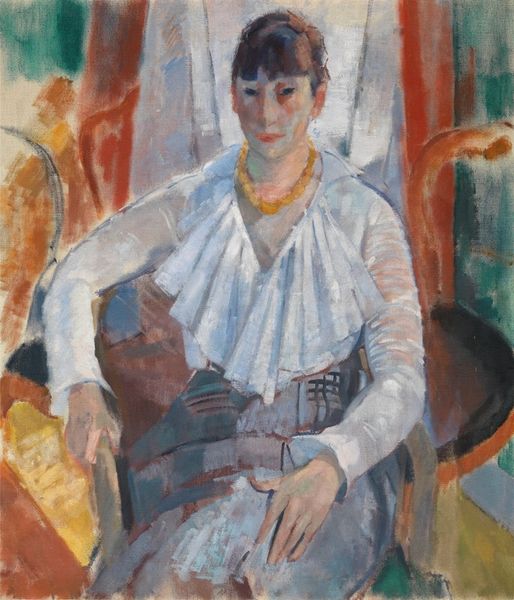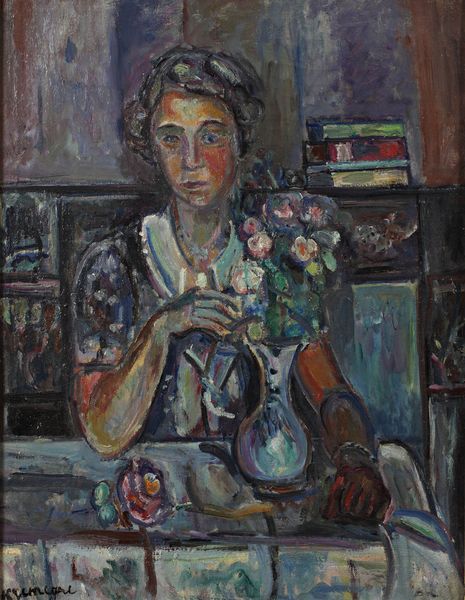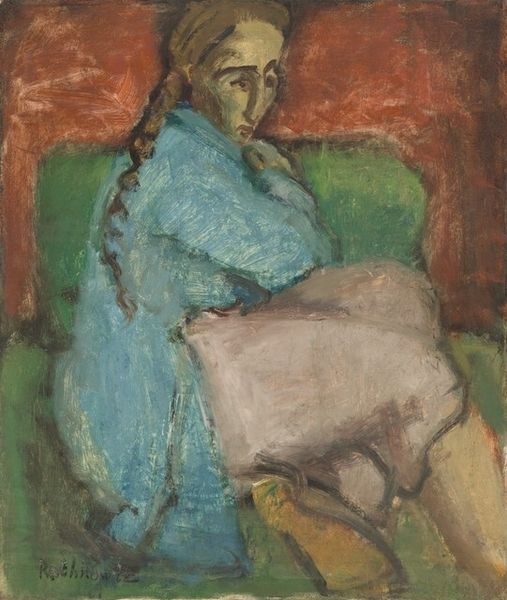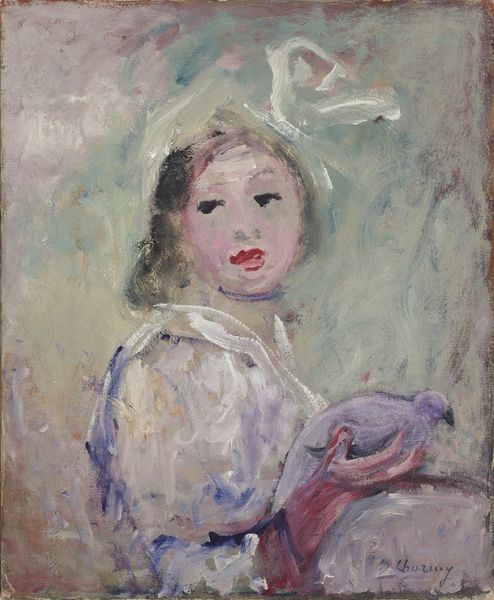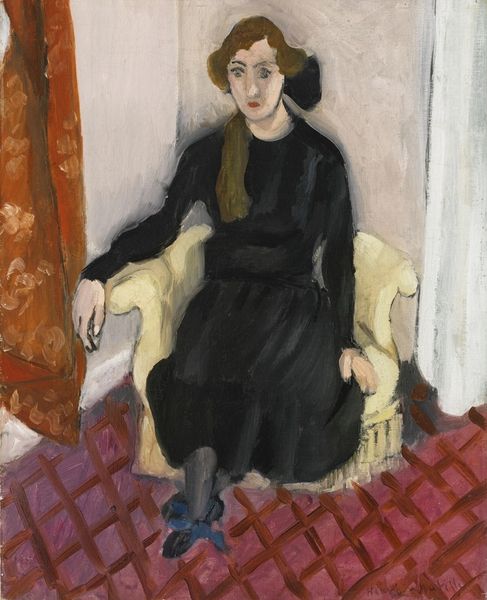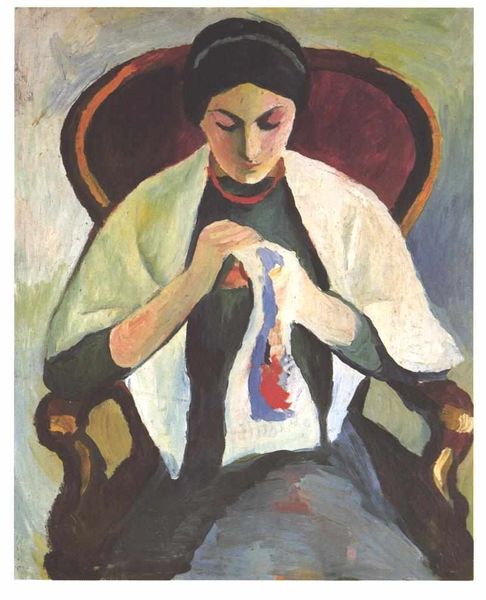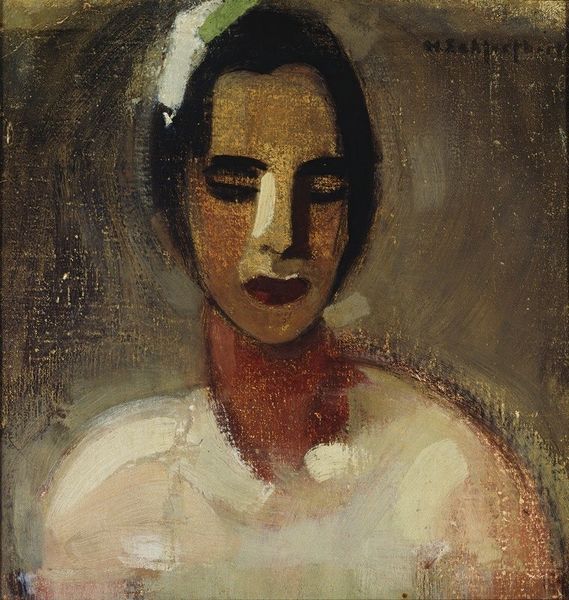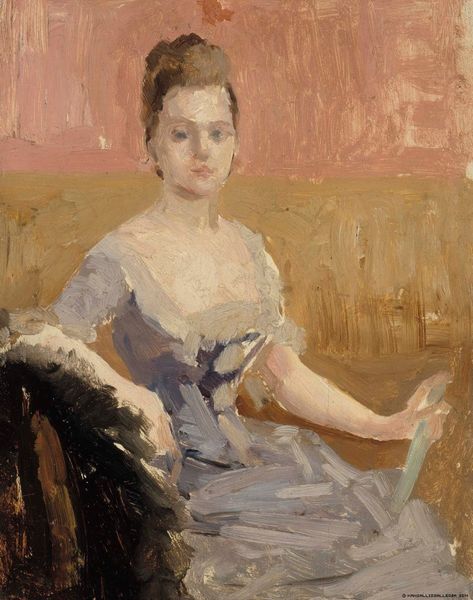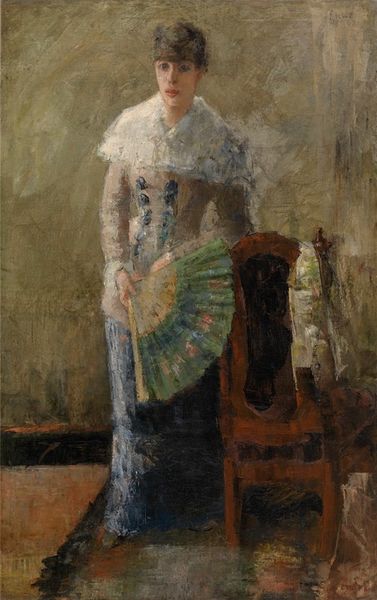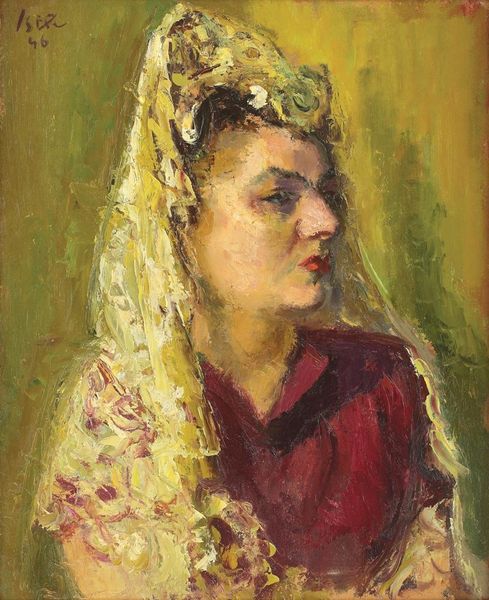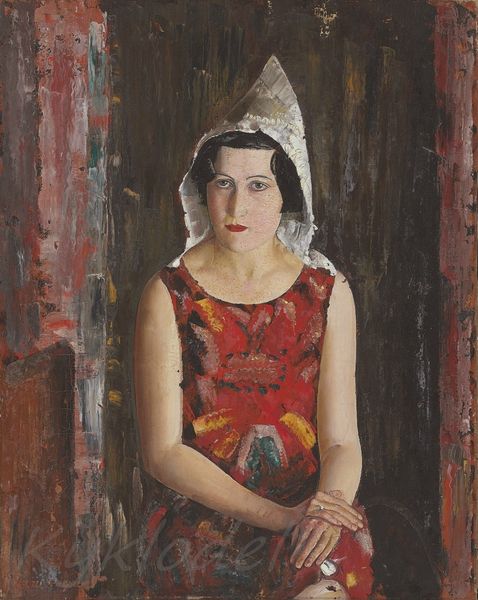
painting, oil-paint
#
portrait
#
painting
#
oil-paint
#
oil painting
#
portrait art
#
modernism
#
watercolor
#
fine art portrait
#
realism
Copyright: CC BY-SA 4.0
Editor: This is Minas Avetisyan’s "Mother's Portrait" from 1964, an oil painting. The palette is muted, but the expression in the mother's eyes is piercing. It makes me wonder about her inner life, the dreams or hardships she's seen. What do you see in this piece, looking beyond just the surface? Curator: What strikes me is the socio-political context in which Avetisyan painted this. It's the Soviet era, but he’s not creating idealized images of labor or communist triumph. Instead, he offers us a very human, intimate portrayal of a woman, likely a rural woman given her headscarf. What does it mean to focus on the individual experience of a woman, within a system that often prioritized the collective? What does it say about Armenian identity at the time? Editor: That's interesting. I was only focused on her individual experience, and the almost melancholic mood. But you're right, the setting probably had a huge impact. How does this relate to other portraits of women from that period? Curator: Well, many officially sanctioned portraits served a propagandistic function, presenting idealized images of women as workers or mothers. Avetisyan seems to be subverting that. Notice how he captures a sense of quiet strength and resilience. The rough brushstrokes, the earthy tones – it all conveys a certain reality that you wouldn't necessarily see in official Soviet art. It’s a very powerful act of resistance, to depict this woman with such honesty and dignity. Editor: So, you see it as a quiet act of rebellion, portraying the reality of women outside the dominant narrative? Curator: Precisely! It also forces us to think about how national identity, gender, and political ideology intertwine in art. Who gets to be seen, and how are they represented? That's the heart of it. Editor: That really reframes how I see this work! Thanks, I hadn't considered those layers. Curator: Absolutely, thinking of it in these broader terms allows a richer understanding.
Comments
No comments
Be the first to comment and join the conversation on the ultimate creative platform.
